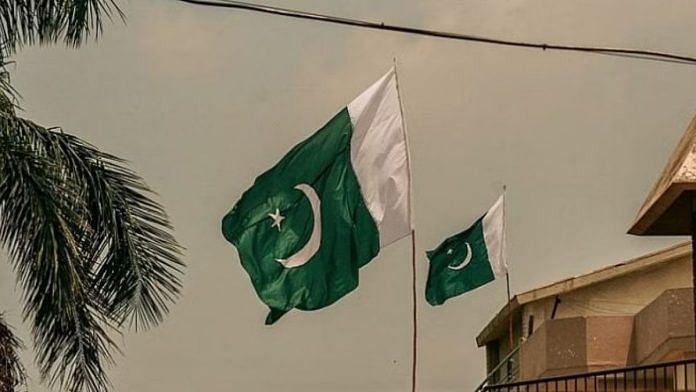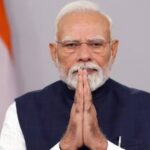We must be clear that India’s war on terror is actually a war against an ideology. We must understand what Pakistan embodies.
Whatever its legal and juristic status, Pakistan in reality symbolises the lingering presence of Muslim political power in India. It keeps alive the memory of the Islamic invasions that began in 712 CE, when Muhammad bin Qasim invaded Sindh. It names its missiles Ghaznavi and Ghori, after invaders of India. Its prime minister calls his fighter pilots Shaheen (raptor), the bird whose predatory spirit wanted to breathe into the Muslim body.
There is no real “idea” of Pakistan. The nation is not the embodiment of an idea, but the expression of an emotion—hatred for Hindus.
It’s the reason the leaders of the Pakistan movement couldn’t clearly define what kind of nation they wanted to build. To this day, Pakistan remains caught in an identity crisis. This is because Pakistan originated from a subconscious urge rather than a well-conceived thought. Its leaders were not inspired by a higher ideal; they were driven by an instinct — primal, primaeval, primitive. They neither had the intellectual ability to conceptualise their demand nor the integrity to admit that the actual reason behind it was so impolitic, it was best left unsaid.
Thus, it fell upon the critics of the Pakistan movement to make sense of it. BR Ambedkar wrote Pakistan or the Partition of India (1945), and Rajendra Prasad wrote India Divided (1946), both bulky treatises. Nehru dwelled upon Pakistan’s creation in The Discovery of India (1946). Patel’s writings on the subject have been compiled into a full–length book. Maulana Azad’s essays, speeches, and interviews would fill a substantial volume. And it was C Rajagopalachari’s formula that became the “mutilated and moth–eaten Pakistan”.
On the Indian side, a huge corpus of literature was produced by erudite, thoughtful, and evolved leaders. On the Pakistani side, there was Jinnah and his cohort, who wouldn’t utter a word explaining their vision. Perhaps they knew their constituency instinctively understood what they really stood for.
“There is not an inch of the soil of India which our fathers did not once purchase with their blood. We cannot be false to the blood of our fathers. India, the whole of it, is therefore our heritage and it must be reconquered for Islam,” wrote FK Khan Durrani in The Meaning of Pakistan (1944).
Pakistan is not a state in the conventional sense, certainly not in the way India is. It is to India what Granada was to the Spanish Reconquista—the last post of Islamic retreat. There is a difference, though. In Spain, Muslim rule was entirely foreign; very few native Spaniards had converted to Islam. So when the Nasrid dynasty fell, Muslims in Spain had to leave, much like how the British left India after their rule ended.
Muslim rule began in Spain in 711 CE, around the same time as it did in India. It ended with ‘The Moor’s Last Sigh’ and the fall of Granada in 1492. In India, however, a second phase of Muslim rule began in 1526 with Babur’s victory over Ibrahim Lodi at the First Battle of Panipat. And when that rule finally ended in 1857, there was no question of Muslims leaving. Not because the British were still present, but because the polytheistic Hindus were different from the monotheistic Christians. Polytheism is pluralistic. It’s about tolerance, accommodation, and coexistence. Islam could live in peace with Hinduism — but only if it could first be at peace with itself.
The material reason Islam didn’t meet the Spanish fate in India was simple: a large number of the Indian population—about one-third—had converted to Islam. In the northwestern and eastern regions, Muslims formed a majority and were distributed across the subcontinent.
The Muslim ruling class, or Ashraf—descendants of foreign conquerors—successfully got the native converts on their side, making them their foot soldiers and cannon fodder. With such a large support base, the Ashraf could still hope to be co-rulers, or have a separate state of their own.
But the Ashraf were too proud of their foreign lineage to become part of a nation with their former subjects. So, the Two-Nation Theory was posited to make two states out of one country. But the matter did not end there. Pakistan was a pause, not a full stop. The dynamics of Islam in India wouldn’t allow peaceful coexistence between two nation states in one country.
Donald Trump’s of the phrase “a thousand years” in the context of Kashmir may be politically incorrect, but it captures the truth. Earlier, had used a similar expression.
India was Islam’s last frontier, and even then, it had been largely a story of failure. Despite centuries of Muslim rule, two–thirds of it remained Hindu. To restore Muslim rule, the whole country had to be converted, which wasn’t possible without reconquest. A base was needed to relaunch this campaign.
Pakistan is that base—the rallying point of a retreating Islam and the military base for reconquest. It needed an ideology. Ghazwa-e-Hind provides precisely that.
Ghazwa-e-Hind is a purported prediction of Prophet Muhammad, according to which India was going to be conquered for Islam. It is Pakistan’s not-so-hidden ideology, which it has been putting in action through terrorist organisations such as Jaish-e-Mohammed and Lashkar-e-Taiba.
As an ideology, Ghazwa-e-Hind may be of relatively recent provenance, but the term itself appears in , one of the Sihah al-Sitta (the six authoritative Hadees books). “The Messenger of Allah said: ‘There are two groups of my Ummah whom Allah will free from the Fire: The group that invades India, and the group that will be with ‘Isa bin Maryam’,” reads in Sunan an-Nasa’i, in Kitab al-Jihad, subchapter Ghazwat-ul Hind.
The problem with this Hadees is manifold. According to the Islamic science of Isnad (the study of transmission chains to prove authenticity), this narration is considered Za’eef (weak)—a euphemism for fabrication.
The main method for assessing the authenticity of a Hadees is Asma-ur–Rijal, the study of biographical details of its narrators. The process is similar to Lower Criticism in Biblical studies, which involves comparing manuscripts for any mistakes or anomalies. On the other hand, Higher Criticism, which uses historical context and linguistic analysis to evaluate texts, has not yet been applied in Hadees studies. If it were, the anachronistic use of the term ‘Ghazwa’ would expose the spuriousness of this Hadees.
In classical Arabic, the term ‘Ghazwa’, from the verb ‘Ghaza’, referred to the traditional Arabian practice of raiding and plundering enemy caravans. However, in Islamic literature, ‘Ghazwa’ has a narrower, highly specific meaning. It denotes military campaigns personally led by the Prophet Muhammad. Other campaigns, commanded by his companions, are known as Saraya (singular: Sariyya). The meaning and usage of both ‘Ghazwa’ and ‘Sariyya’ have been limited to the Prophet’s lifetime. After his death, there has been neither a Ghazwa nor a Sariyya, even though Islamic wars (jihad) continued unabated.
Prophet Muhammad never led an expedition to India, so there was no Ghazwa-e-Hind. He also didn’t send any army to the subcontinent, so there was no Sariyya either. Indeed, India was invaded and conquered by various Muslim dynasties, but those were acts of naked aggression and despoliation. There is no justification for involving the Prophet in this wrong.
There never was a Ghazwa-e-Hind. There never will be.
One may ask, why would Prophet Muhammad want an invasion of India, which was too distant to cause the mildest of provocations? If he visualised an invasion simply because Indians followed their own religion, what does that suggest about the Prophet and the religion he founded? Are those who believe in this Hadees ready to deal with these inevitable implications?
Before Ghazwa-e-Hind was appropriated as an ideological tool by jihadists, the most famous narration about India in the Prophetic tradition speaks of the Prophet sensing a “cool breeze” from the land of India on his skin. For a desert–dweller living under the scorching sun, there could be no greater comfort than the cool breeze, and there could be no higher praise for a land than the metaphor that the Prophet used for India. Iqbal immortalised it in his poetry:
“Mir-e-Arab ko aayi thandi hawa jahan se
Mera watan wahi hai, mera watan wahi hai”
(From where the cool breeze reached the Lord of Arabbia,
That is my homeland, that is my homeland)
The Arabs admired India for its high culture. Aristocratic Arab women were often named “Hind”, including Hind bint Utba, mother of Mu’awiya I, who founded the Umayyad Caliphate, Islam’s first dynasty. The finest swords in Arabia were called Muhannad—literally ‘made in India’. The subcontinent was their source of higher knowledge and the best quality of goods. No wonder the Islamic Golden Age owed as much to Indian science and mathematics as to Greek philosophy. Even Arabic numerals are referred to by the Arabs themselves as ‘Hindsa’—“from Hind”.
There was no plausible reason for Prophet Muhammad to view India with hostility. If anything, he looked at it with admiration and fondness.
Those who fabricated the Hadees about the so–called Ghazwa-e–Hind, and those who played it up to conjure an anti–India ideology, have sinned against humanity and civilisation. Ghazwa-e–Hind is a falsehood—the false ideology of a false political project, built on a false Hadees.
Does anyone believe that if Kashmir were to be given to Pakistan, all would be well between the two countries? Pakistan’s hostility toward India is not because of geopolitical issues or border disputes. It’s quintessentially religious antagonism, driven by Islamic hostility toward Hinduism’s idol worship and polytheism.
Pakistan’s very raison d’être is anti–Hinduism. Peaceful coexistence with India goes against its foundational ideology. To survive, it has to remain in a perpetual state of war against Hindu-majority India. But if it persists with this war, it wouldn’t survive for long. It’s a Catch–22 situation.
For Pakistan to live in peace with India, it will have to reimagine its foundational ideology of religious antagonism. And for that to happen, Islam has to become tolerant of other faiths. Most importantly, it has to switch from Ghazwa-e-Hind to “Mir-e Arab ko aayi thandi hawa jahan se”. Islam needs its own New Normal.
(Edited by Prasanna Bachchhav)








